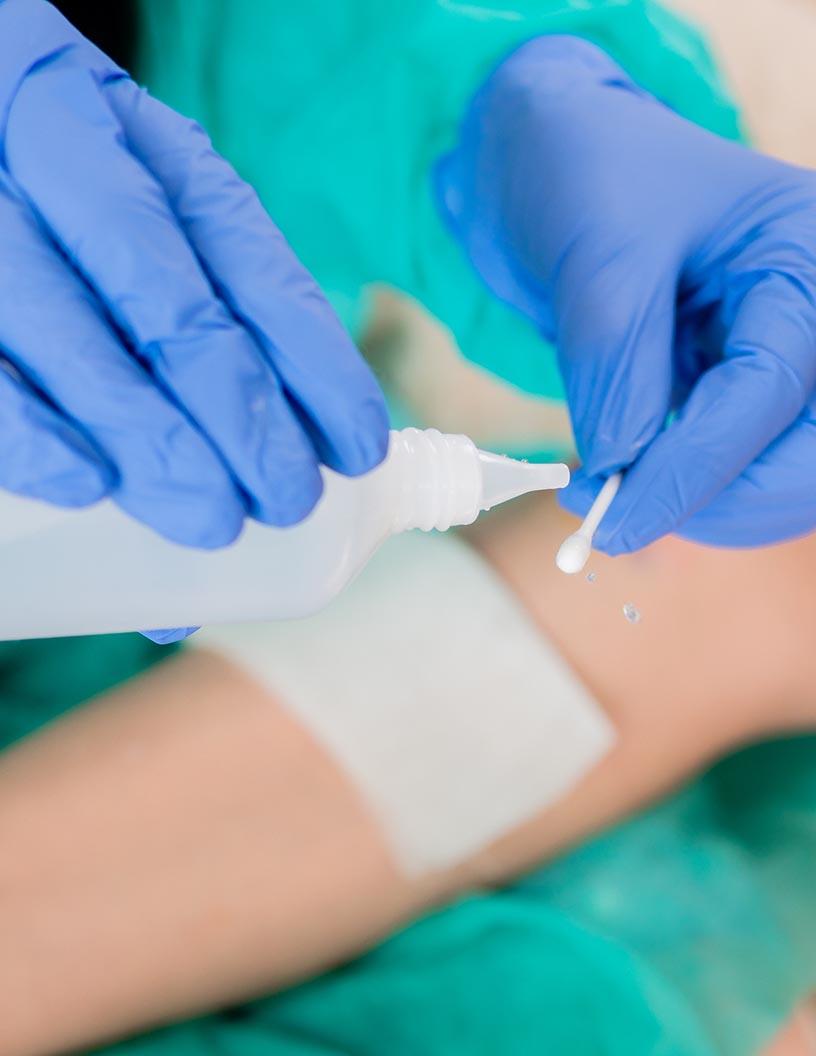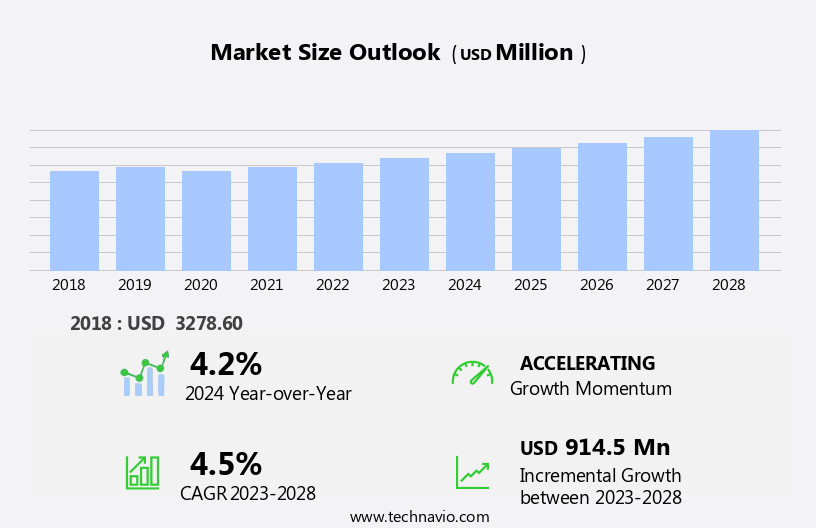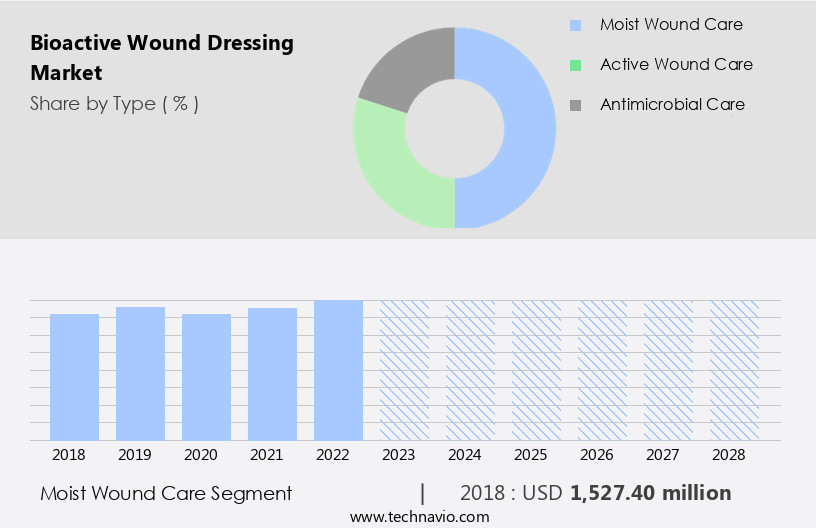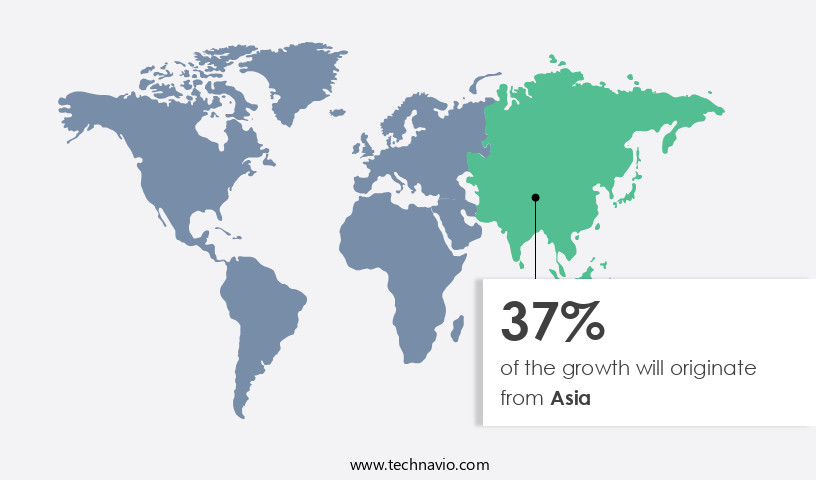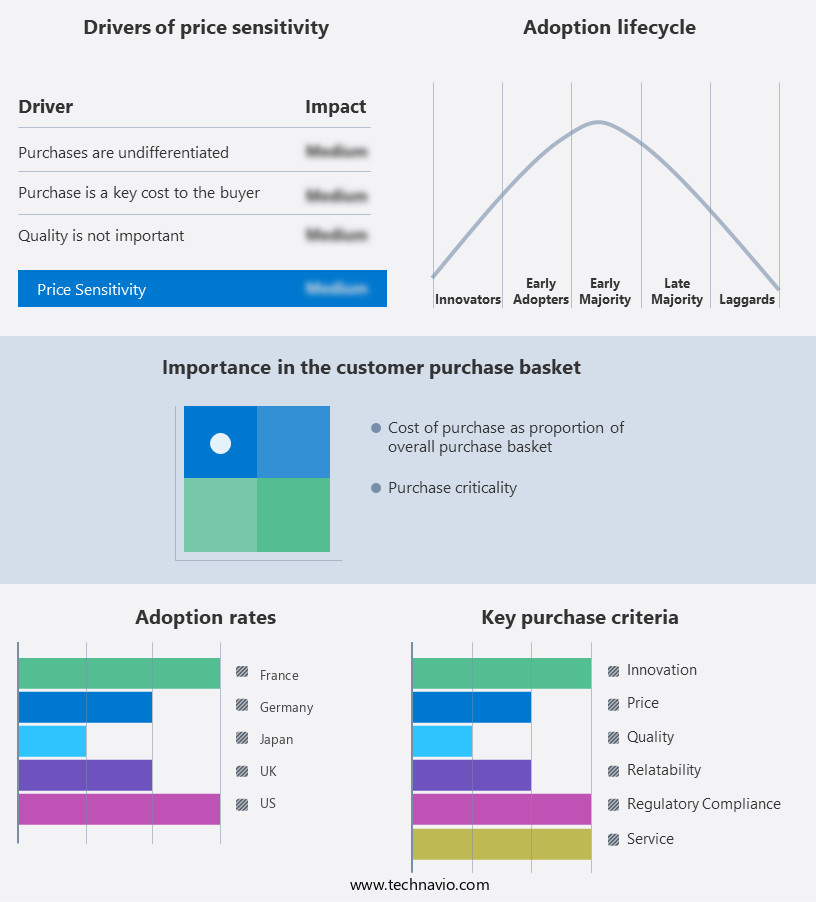Bioactive Wound Dressing Market Size 2024-2028
The bioactive wound dressing market size is forecast to increase by USD 914.5 million, at a CAGR of 4.5% between 2023 and 2028.
- The market is driven by the increasing prevalence of acute and chronic wounds, particularly among the geriatric population. This demographic group is more susceptible to wounds due to aging-related factors and comorbidities. The significant demand for advanced wound care solutions is a result of the growing number of wounds and the need for effective, patient-friendly products. However, challenges persist in the market. Limitations and complications associated with traditional wound care products, such as infection risk, pain, and adhesion issues, necessitate the development of more sophisticated bioactive wound dressings.
- These advanced products aim to address these challenges by promoting tissue regeneration, reducing pain, and minimizing the risk of infection. Companies in the market must focus on addressing these challenges while ensuring affordability and accessibility to cater to the diverse needs of patients and healthcare providers.
What will be the Size of the Bioactive Wound Dressing Market during the forecast period?
Explore in-depth regional segment analysis with market size data - historical 2018-2022 and forecasts 2024-2028 - in the full report.
Request Free Sample
The market continues to evolve, driven by advancements in biocompatibility testing and the integration of various technologies to enhance wound healing. Fibrin sealants, a type of bioactive dressing, play a crucial role in promoting hemostasis and tissue regeneration. Regenerative medicine, with its focus on cellular therapy and tissue engineering, is another significant contributor to the market's dynamism. Antimicrobial peptides, incorporated into dressings, offer effective infection control. Debridement techniques, such as enzymatic and mechanical methods, facilitate the removal of dead tissue and promote granulation tissue formation. Exudate management and oxidative stress reduction are essential aspects of acute and chronic wound care, leading to the development of hydrogel dressings and polymeric biomaterials.
Inflammation reduction and angiogenesis stimulation are key targets for innovation, with silver nanoparticles and biosynthetic scaffolds being explored for their potential. Wound bed preparation and infection control remain critical factors, driving the market's growth in both acute and chronic wound care. Silicone dressings, collagen matrices, and alginate hydrogels are some of the materials used in the development of these advanced wound dressings. The ongoing research and development efforts in this field underscore the continuous nature of market dynamics and the potential for significant growth in the market.
How is this Bioactive Wound Dressing Industry segmented?
The bioactive wound dressing industry research report provides comprehensive data (region-wise segment analysis), with forecasts and estimates in "USD million" for the period 2024-2028, as well as historical data from 2018-2022 for the following segments.
- Type
- Moist wound care
- Active wound care
- Antimicrobial care
- Geography
- North America
- US
- Europe
- France
- Germany
- UK
- APAC
- Japan
- Rest of World (ROW)
- North America
By Type Insights
The moist wound care segment is estimated to witness significant growth during the forecast period.
The market is experiencing significant growth due to the increasing prevalence of chronic and acute wounds, the need for advanced wound care solutions, and the ongoing research and development in the field of regenerative medicine. Biocompatibility testing is crucial in ensuring the safety and efficacy of these advanced wound dressings. Fibrin sealants, a type of bioactive dressing, play a vital role in promoting wound healing by enhancing clotting and sealing the wound. Regenerative medicine, including cellular therapy and tissue engineering, is revolutionizing the wound care landscape. Antimicrobial peptides, incorporated into wound dressings, help reduce inflammation and prevent infection.
Debridement techniques, such as enzymatic and mechanical, are used in conjunction with bioactive wound dressings to remove dead tissues and prepare the wound bed for optimal healing. Granulation tissue formation and exudate management are essential aspects of wound care, and bioactive wound dressings offer effective solutions. Oxidative stress, a significant hindrance to wound healing, is mitigated by the antioxidant properties of some bioactive dressings. Dermal regeneration and skin regeneration are facilitated by the use of these advanced wound care solutions. Silicone dressings, hydrogel dressings, and polymeric biomaterials are popular types of bioactive wound dressings. Infection control is ensured through the use of silver nanoparticles and other antimicrobial agents.
Angiogenesis stimulation and tissue engineering are key areas of focus in the development of bioactive wound dressings for chronic wound care. Biosynthetic scaffolds, chitosan membranes, collagen matrices, and alginate hydrogels are some of the materials used in the production of bioactive wound dressings. Cell proliferation and inflammation reduction are essential for effective wound healing, and bioactive wound dressings address these needs. Drug delivery systems are integrated into wound dressings to provide localized therapy and enhance healing outcomes. Acute wound care and wound bed preparation are critical phases in the wound healing process, and bioactive wound dressings offer advanced solutions for these stages.
Infection control, exudate management, and pain reduction are key considerations in the selection of wound dressings, and bioactive options address these needs effectively.
The Moist wound care segment was valued at USD 1527.40 million in 2018 and showed a gradual increase during the forecast period.
Regional Analysis
Asia is estimated to contribute 37% to the growth of the global market during the forecast period.Technavio’s analysts have elaborately explained the regional trends and drivers that shape the market during the forecast period.
The market in North America, which accounted for the largest share in 2023, is driven by the presence of key players such as 3M, Johnson & Johnson, and Integra Lifesciences. These companies are focusing on the development and launch of advanced bioactive wound dressings to cater to specific wound care needs, including water resistance, flexibility, and transparency. The US, being the largest market in North America, is witnessing significant demand from acute care facilities, including hospitals and ambulatory care centers. The market is witnessing a surge in demand for bioactive wound dressings due to their ability to promote granulation tissue formation, manage exudate, reduce inflammation, and enhance skin and dermal regeneration.
Advanced technologies such as angiogenesis stimulation, tissue engineering, and drug delivery systems are also gaining popularity in the market. The use of antimicrobial peptides, fibrin sealants, and polymeric biomaterials in bioactive wound dressings is further boosting their adoption. Additionally, the market is witnessing the emergence of biosynthetic scaffolds, chitosan membranes, collagen matrices, and alginate hydrogels, which offer advantages such as biocompatibility, biodegradability, and improved wound healing. The market is also focusing on infection control through the use of silver nanoparticles and oxidative stress reduction. The market is expected to continue its growth trajectory due to the increasing prevalence of chronic wounds and the ongoing research and development in the field of regenerative medicine.
Market Dynamics
Our researchers analyzed the data with 2023 as the base year, along with the key drivers, trends, and challenges. A holistic analysis of drivers will help companies refine their marketing strategies to gain a competitive advantage.
What are the key market drivers leading to the rise in the adoption of Bioactive Wound Dressing Industry?
- The prevalence of both acute and chronic wounds is the primary factor fueling market growth. This increasing burden of wounds presents significant opportunities for market expansion in various healthcare sectors.
- The global market for bioactive wound dressings has experienced significant growth due to the increasing prevalence of acute and chronic wounds. According to research, the aging population and rising incidence of lifestyle diseases are key factors driving this trend. Acute wounds, including surgical and traumatic injuries, as well as chronic wounds such as diabetic ulcers, venous ulcers, and pressure ulcers, are estimated to increase the demand for these products. Bioactive wound dressings, which include tissue engineering solutions like biosynthetic scaffolds, cell proliferation promoters, and biomimetic membranes, play a crucial role in enhancing the healing process.
- Products like chitosan membranes, collagen matrices, and alginate hydrogels are gaining popularity due to their ability to promote tissue regeneration and provide a protective barrier for the wound. This market is expected to continue growing as researchers develop more advanced and effective bioactive wound dressing solutions.
What are the market trends shaping the Bioactive Wound Dressing Industry?
- The geriatric population is driving a notable market trend with increasing demand for products and services. This demographic segment is projected to significantly influence market growth in the coming years.
- The aging population is at a higher risk for fall-related injuries, accounting for 25-35% of unintentional injuries worldwide. In countries with larger geriatric populations, such as the UK, Canada, and Australia, hospital admissions due to falls reach 1-3 per 10,000 people. In the US, 25% of falls among older adults result in severe injuries each year. This increasing demand for effective wound care solutions has led to the growth of the market.
- These advanced dressings offer benefits like biocompatibility, promoting granulation tissue growth, and managing exudate. They also incorporate antimicrobial peptides and fibrin sealants to prevent infections and enhance healing. Additionally, they address oxidative stress, a common complication in elderly patients, contributing to their therapeutic value.
What challenges does the Bioactive Wound Dressing Industry face during its growth?
- The growth of the wound care industry is significantly influenced by the complexities and limitations inherent in the use of wound care products.
- Bioactive wound dressings, including silicone, hydrogel, alginate, and polymeric biomaterials, play a crucial role in promoting dermal and skin regeneration during the wound healing process. However, traditional wound dressings have limitations and potential complications. For instance, moist wound environments created by foam dressings can hinder autolysis and cause peri-wound skin maceration if saturated. Alginate dressings are suitable only for exuding wounds and necessitate secondary dressings. Hydrocolloid dressings can encourage anaerobic bacterial growth, which can be mistaken for pus and lead to malodor. Hydrogel dressings may result in maceration of the surrounding skin and require secondary dressings, while some patients may experience sensitivity to preservatives.
- The advancement in cellular therapy and the incorporation of the extracellular matrix into wound dressings offer promising solutions to address these limitations and enhance the efficacy of wound healing. Silicone dressings, for example, can provide a protective barrier, reduce inflammation, and improve scar appearance. Polymeric biomaterials, such as collagen and chitosan, can promote tissue regeneration and provide a scaffold for cellular growth. Incorporating these advanced materials into bioactive wound dressings can address the limitations of traditional dressings and improve patient outcomes.
Exclusive Customer Landscape
The bioactive wound dressing market forecasting report includes the adoption lifecycle of the market, covering from the innovator’s stage to the laggard’s stage. It focuses on adoption rates in different regions based on penetration. Furthermore, the bioactive wound dressing market report also includes key purchase criteria and drivers of price sensitivity to help companies evaluate and develop their market growth analysis strategies.
Customer Landscape
Key Companies & Market Insights
Companies are implementing various strategies, such as strategic alliances, bioactive wound dressing market forecast, partnerships, mergers and acquisitions, geographical expansion, and product/service launches, to enhance their presence in the industry.
3M Co. - This company specializes in advanced bioactive wound dressings, including the 3M Tegaderm Hydrocolloid Dressing. These innovative products promote wound healing through active interaction with the healing process, enhancing patient recovery. The company's commitment to research and development ensures continuous improvement in wound care solutions.
The industry research and growth report includes detailed analyses of the competitive landscape of the market and information about key companies, including:
- 3M Co.
- Axio Biosolutions Pvt. Ltd.
- B.Braun SE
- Coloplast AS
- ConvaTec Group Plc
- Covalon Technologies Ltd.
- DermaRite Industries LLC
- ETS Wound Care LLC
- Hollister Inc.
- Integra LifeSciences Holdings Corp.
- Johnson and Johnson Services Inc.
- Mediterra
- Medtronic PLC
- MiMedx Group Inc.
- Molnlycke Health Care AB
- Organogenesis Holdings Inc.
- Paul Hartmann AG
- Smith and Nephew plc
- UEG Medical
Qualitative and quantitative analysis of companies has been conducted to help clients understand the wider business environment as well as the strengths and weaknesses of key industry players. Data is qualitatively analyzed to categorize companies as pure play, category-focused, industry-focused, and diversified; it is quantitatively analyzed to categorize companies as dominant, leading, strong, tentative, and weak.
Recent Development and News in Bioactive Wound Dressing Market
- In January 2024, Medtronic plc, a global healthcare solutions company, announced the FDA approval of its new bioactive wound dressing, Integra WoundFoam 2. This advanced dressing utilizes a unique combination of collagen and chondroitin sulfate to promote wound healing (Medtronic Press Release, 2024).
- In March 2024, Smith & Nephew, a leading medical device manufacturer, entered into a strategic partnership with the University of Strathclyde's Advanced Formulation Engineering (AFE) Research Centre. This collaboration aimed to develop next-generation bioactive wound dressings using nanotechnology and biomaterials (Smith & Nephew Press Release, 2024).
- In April 2024, ConvaTec Group plc, a leading wound care solutions provider, completed the acquisition of Molnlycke Health Care AB, a Swedish medical products company, for approximately â¬3.2 billion. This acquisition expanded ConvaTec's product portfolio and strengthened its presence in the advanced wound care market (Reuters, 2024).
- In May 2025, 3M, a multinational corporation, received EU regulatory approval for its new silver-infused bioactive wound dressing, Tegaderm Silver Ultra. This dressing incorporates a novel hydrogel technology that enhances the delivery of silver ions to the wound site, promoting faster healing (3M Press Release, 2025).
Research Analyst Overview
- The market encompasses a range of advanced products, including antimicrobial agents, biological dressings, smart dressings, and tissue adhesives. These innovations cater to various wound types, such as venous leg ulcers, pressure ulcers, diabetic foot ulcers, and burn wound treatment. Biological scaffolds, which utilize natural polymers and synthetic materials, facilitate tissue regeneration through immune modulation and peptide synthesis. Regulatory pathways for these products involve in vitro testing and clinical trials to ensure therapeutic efficacy and patient outcomes. In vivo studies and advanced wound care techniques, such as artificial skin and cell seeding, further enhance the potential of bioactive wound dressings. Surgical dressings and wound assessment tools, including bioabsorbable materials and protein engineering, also contribute to the market's growth.
- Smart dressings, which monitor wound healing progress and adjust release rates of bioactive molecules, represent a significant trend in the industry. The market's dynamic nature is driven by continuous research and development efforts to improve patient care and address the complexities of wound healing.
Dive into Technavio’s robust research methodology, blending expert interviews, extensive data synthesis, and validated models for unparalleled Bioactive Wound Dressing Market insights. See full methodology.
|
Market Scope |
|
|
Report Coverage |
Details |
|
Page number |
137 |
|
Base year |
2023 |
|
Historic period |
2018-2022 |
|
Forecast period |
2024-2028 |
|
Growth momentum & CAGR |
Accelerate at a CAGR of 4.5% |
|
Market growth 2024-2028 |
USD 914.5 million |
|
Market structure |
Fragmented |
|
YoY growth 2023-2024(%) |
4.2 |
|
Key countries |
US, Germany, France, UK, and Japan |
|
Competitive landscape |
Leading Companies, Market Positioning of Companies, Competitive Strategies, and Industry Risks |
What are the Key Data Covered in this Bioactive Wound Dressing Market Research and Growth Report?
- CAGR of the Bioactive Wound Dressing industry during the forecast period
- Detailed information on factors that will drive the growth and forecasting between 2024 and 2028
- Precise estimation of the size of the market and its contribution of the industry in focus to the parent market
- Accurate predictions about upcoming growth and trends and changes in consumer behaviour
- Growth of the market across North America, Europe, Asia, and Rest of World (ROW)
- Thorough analysis of the market’s competitive landscape and detailed information about companies
- Comprehensive analysis of factors that will challenge the bioactive wound dressing market growth of industry companies
We can help! Our analysts can customize this bioactive wound dressing market research report to meet your requirements.
